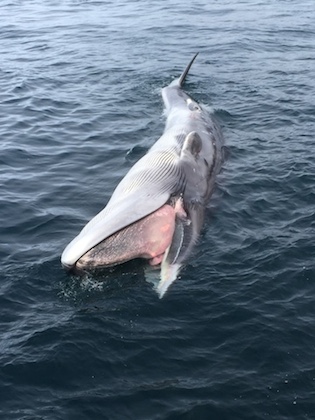400716-finwhale.jpg

Floating fin whale in Alaska. Credit: Bree Witteveen, Sea Grant Alaska
You could forgive the fin whale if it has an inferiority complex. It’s the second-largest animal on the planet, yet it’s virtually unknown. It’s overshadowed by its bigger cousin, the blue whale. And that’s a shame, because it’s a beautiful and graceful animal.
The fin whale is found around the world, mainly in colder waters. A northern species rings the northern Atlantic and Pacific oceans, while a southern species is found around Antarctica. The northern whales grow up to about 75 feet long, while the southern ones can be about 10 feet longer, and can weigh up to 70 or 80 tons.
Not only is the fin whale big, it’s also fast. In fact, it’s the fastest of all the big whales, with top speeds of about 25 miles per hour — a pace that once earned it the nickname “the greyhound of the sea.”
The fin whale feeds mainly by filtering tiny animals known as krill from the water — up to a couple of tons per day. But it can also use its great speed to loop around schools of fish, compacting them into tight balls. The whale then plunges into the mass to grab an easy meal.
Like all big whales, by the mid-1900s the fin whale had been hunted to near extinction. Today it’s protected by international treaties, so its numbers may be rebounding, though there are fewer than a hundred thousand or so in all. Yet the whale still faces hazards — collisions with ships, for example, and loss of food from overfishing. So the fin whale is still an endangered species — a little-known giant fighting for survival.

